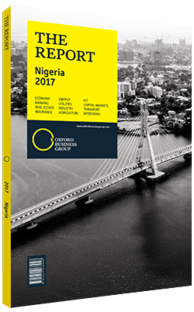Economic downturn slows retail spending from Nigeria's middle class
In January 2017 Nestlé, the world’s largest food and beverage company, announced a shift in its strategy for Africa. “The bedrock of our business is really where the bulk of the population resides,” John Martin Miller, the company’s senior vice-president for Africa, Asia and Oceania, told international media in Lagos. “For the next five to 10 years [the populations of sub-Saharan Africa] will continue to reside lower down on the socio-economic pyramid.”
This announcement served as an acknowledgment of the price-conscious nature of the majority of sub-Saharan consumers, but it also challenges the recent narrative that Africa’s burgeoning middle class is an increasingly influential driver of retail activity: a focus on lower-income consumers has put Nestlé’s sales growth rate in sub-Saharan Africa higher than in any other region.
As the most populous country in Africa, Nigeria provides significant market potential, and a focus on lower-cost goods could prove effective for other retailers wishing to increase their sales in the region.
Purchasing power has generally risen in markets across the continent over the past decade, supported by strong GDP growth rates that, in some cases, were in double figures. Improvements in infrastructure and payments have also helped to bring down distribution and transaction costs.
However, the impact that this has had on household spending is difficult to pinpoint, particularly in terms of discretionary income. Since the sharp decrease in oil prices, consumers throughout Africa have struggled with stagnant wage growth, depreciating currencies, rising inflation and subsidy cuts.
By The Numbers
According to AT Kearney’s 2016 Global Retail Development Index, Nigeria’s middle class has expanded significantly in recent years, growing by 600% between 2000 and 2014 to 4.1m households, or 11% of the population. This figure is projected to increase to 11.7m households by 2030.
The development of the middle class has positively affected various segments of the economy. “Electronics consumption in Nigeria has been increasing steadily thanks to the growing middle class,” Ifeanyi Ochonogor, CEO of E-Terra Technologies, a Lagos-based electronic waste management company, told OBG. “However, this has led to other issues, especially with the disposal of electronic waste.”
Floating Middle Class
The African Development Bank’s formal definition of the middle class is individuals who spend between $2 and $20 a day. Those with daily expenditure of between $2 and $4 are classified as “floating”, and therefore vulnerable to backsliding into poverty. However, even if all the spending of middle-class consumers occurred in formal retail settings in Nigeria, this would translate to as little as $730 per capita per year.
Continental comparisons show consumers are clustered at the lower end of the official middle class range. There are roughly 24m people who spend $2.96 or less per day, demonstrating this tendency to belong to the “floating” category. Nevertheless, Nigeria has the third-largest middle class in the region, behind Ethiopia and South Africa.
In terms of assessing market potential in the future, looking at those in the middle of the spending curve might be more illustrative of the level of retail demand. It is especially important to discern which households can afford to purchase non-daily items. According to an analysis by Citibank, such spending power would require an income of at least $13.70 per day, or $5000 per year. It is at this point that spending on durable goods noticeably increases.
Due to the tendency for middle-class individuals in Nigeria to hover at the lower end of this classification, it may be most effective for retailers to focus their marketing efforts on inexpensive and non-durable goods. When incomes rise, however, demand for durable goods is likely to increase as well.
You have reached the limit of premium articles you can view for free.
Choose from the options below to purchase print or digital editions of our Reports. You can also purchase a website subscription giving you unlimited access to all of our Reports online for 12 months.
If you have already purchased this Report or have a website subscription, please login to continue.

